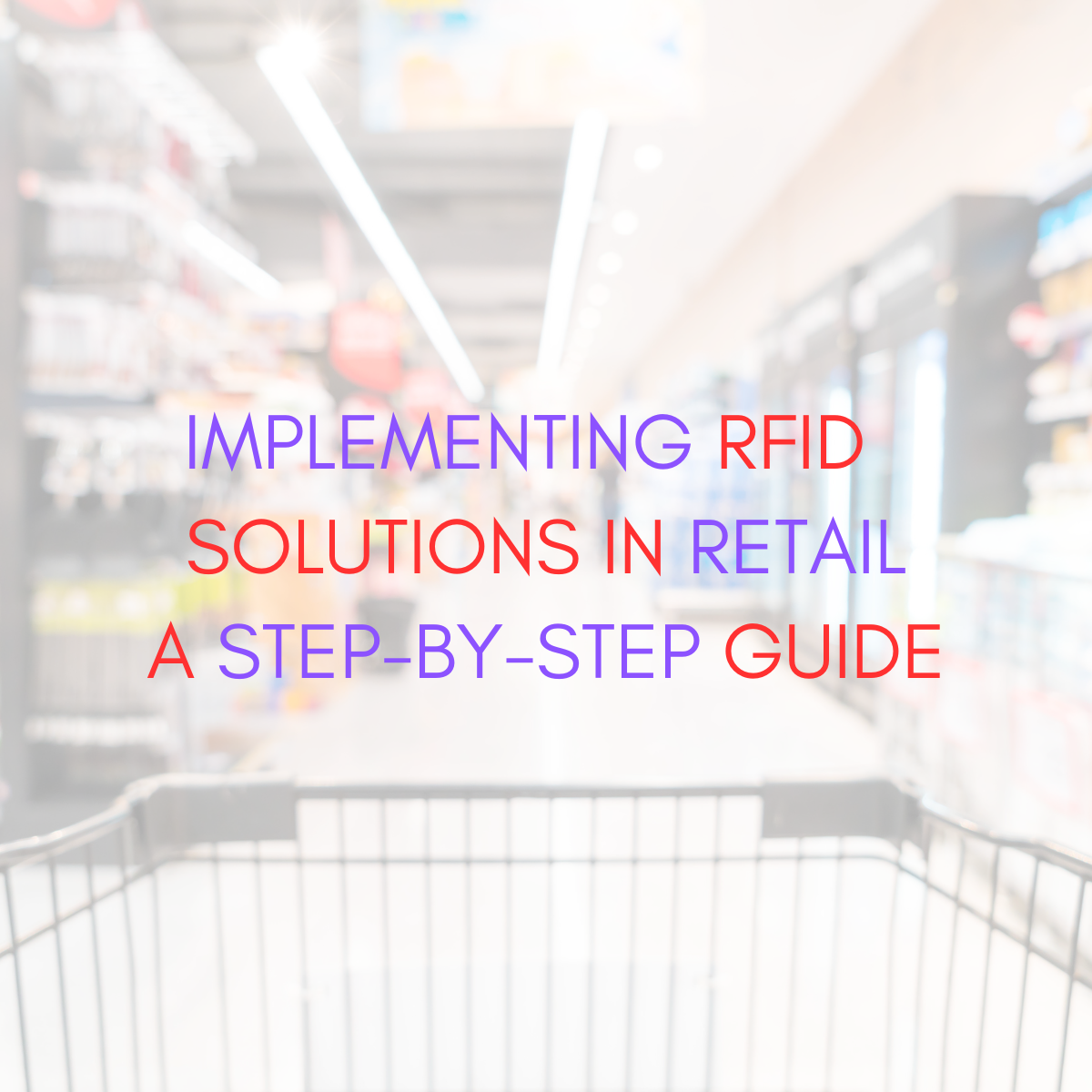Blog on RFID Technology and IoT Solutions
Blog Home
Implementing RFID Solutions in Retail: A Step-by-Step Guide
11 April 2023What is RFID?
RFID stands for Radio Frequency Identification. It is a technology that uses radio waves to wirelessly identify and track objects. An RFID system typically consists of two components: an RFID reader and an RFID tag. The reader emits a radio signal that activates the tag, which then responds with its unique identification number. RFID tags can be attached to a wide range of objects, including products, assets, and even living beings, and can be read from a distance without requiring a line of sight. RFID technology has a variety of applications, including inventory management, asset tracking, access control, and contactless payment systems.
Benefits of Implementing RFID solutions in Retail
Implementing RFID solutions in retail can bring several benefits, including:
Improved inventory accuracy: RFID technology can help retailers accurately track inventory in real-time, reducing the risk of overstocking or stockouts. This can result in better stock management and higher sales.
Increased efficiency: RFID systems can automate many manual processes, such as inventory counts and product searches, saving time and reducing labor costs.
Enhanced customer experience: RFID can enable retailers to provide faster and more accurate service, reducing wait times and improving customer satisfaction.
Better supply chain visibility: RFID technology can help retailers track products from the manufacturer to the store shelf, enabling better supply chain management and reducing the risk of lost or stolen goods.
Reduced shrinkage: RFID can help retailers identify and track the movement of goods, making it easier to identify and prevent theft or loss.
Implementing RFID Solutions in Retail: A Step-by-Step Guide
Radio Frequency Identification (RFID) technology is becoming increasingly popular in the retail industry due to its ability to provide real-time inventory tracking and management, which can ultimately lead to improved efficiency and profits. However, implementing RFID solutions can be a complex process. In this blog post, we will provide a step-by-step guide for retailers looking to implement RFID solutions in their stores.
Step 1: Determine Your Goals
Before implementing RFID solutions, it is important to determine what you want to achieve. Some common goals for retailers include improving inventory accuracy, reducing out-of-stock incidents, point of sale of quick checkout increasing efficiency in stocktaking and replenishment. It is also important to consider your budget and timeline for implementing RFID solutions.
Step 2: Select the Right Hardware
Once you have determined your goals, it is time to select the right hardware for your RFID system. This can include RFID readers, antennas, and tags. Factors to consider when selecting hardware include the size of your store, the types of products you sell, and the level of accuracy required. It is important to choose hardware that is compatible with your existing POS system and software.
Step 3: Plan Your System Layout
Next, you will need to plan the layout of your RFID system. This involves determining where to place the RFID readers and antennas, as well as how to tag your products. It is important to ensure that your RFID system is designed to accurately track all items in your store, from small items to larger items.
Step 4: Train Your Staff
RFID technology requires a different approach to inventory management than traditional methods, so it is important to train your staff on how to use the system. This can include training on how to tag products, how to use RFID readers, and how to interpret data from the system. It is important to ensure that all staff members are comfortable using the system before implementation.
Step 5: Integrate RFID with Existing Systems
Integrating RFID with existing POS systems and software is crucial for seamless implementation. This involves ensuring that the RFID system can communicate with your existing systems and that data can be transferred seamlessly between systems. It is important to work with your IT department or vendor to ensure that the integration is successful.
Step 6: Conduct a Pilot Test
Before rolling out your RFID system to your entire store, it is important to conduct a pilot test. This involves implementing the system in a small area of the store and monitoring its performance. This can help identify any issues or challenges and allow for adjustments to be made before implementation throughout the store.
Step 7: Roll Out the RFID System
- Successful implementation of RFID system involves tagging all products, installing RFID readers and antennas, and integrating the system with existing systems.
- It is important to monitor the system closely after implementation to ensure its effectiveness.
- Intellistride Technology provides cutting-edge RFID solutions for retail businesses of all sizes.
- Their RFID solutions can help retailers improve inventory accuracy, reduce out-of-stock incidents, and increase efficiency in their stores.
- They offer a wide range of RFID hardware, software, and services that are tailored to meet the unique needs of their clients.
- Intellistride Technology’s state-of-the-art RFID technology is designed to seamlessly integrate with existing POS systems and software, making implementation and integration easy and efficient.
- They also provide training and support to ensure that retailers are fully equipped to use their new RFID systems effectively.
- By selecting the right hardware, planning the system layout, training staff, integrating with existing systems, and conducting a pilot test, successful implementation of RFID solutions can be achieved.
- Intellistride Technology is committed to providing their clients with the highest level of service and support.
- Their RFID solutions can help streamline inventory management processes and achieve business goals. Visit our website at www.intellistride.com to learn more.
- Intellistride.com
- Blog
- Implementing RFID Solutions in Retail: A Step-by-Step Guide